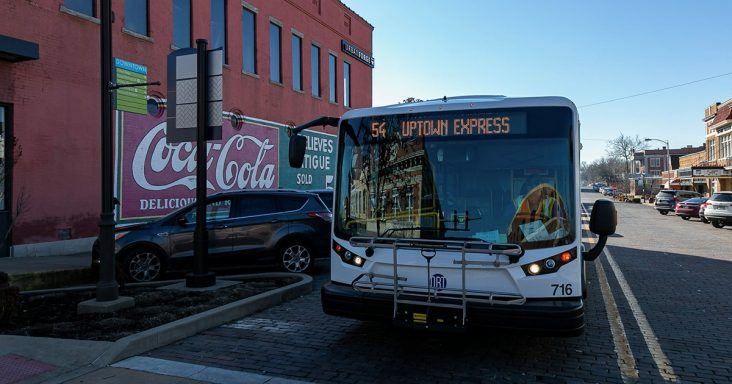Grants help Ozark Regional Transit expand service
by March 9, 2023 2:52 pm 1,083 views

Springdale-based Ozark Regional Transit (ORT) recently received more than $1.62 million in grants from the Walton Family Foundation to expand on-demand service in Northwest Arkansas as the transit provider works to reduce passenger wait times.
ORT has expanded the on-demand, or ridesharing, service in Rogers and Fayetteville and plans to start the service in Springdale. In January, the service was expanded in Bentonville. ORT also plans to offer a hybrid fixed-route and on-demand service in Rogers.
Jeff Hatley, public information officer for ORT, said the hybrid service is unique because it will start as a fixed-route service and transition to on-demand before returning to fixed-route.
ORT recently expanded on-demand service in Bentonville, Fayetteville and Rogers by adding another van in each city. As a result, Fayetteville has two, while Bentonville and Rogers have three each.
Additionally, Fayetteville’s service will be expanded geographically and operate longer on Fridays and Saturdays. A fixed route will be revised to increase frequency.
In Springdale, a fixed route will be cut, while others are revised. On-demand service will be established in the northeast part of Springdale, and two new vans will be added for the service.
Systemwide, the changes and service additions are expected to be implemented by March 27. Afterward, ORT will have a fleet of 10 vehicles for the on-demand service.
According to Hatley, average ridership was 671 daily for on-demand and fixed-route services in 2022, but it’s risen to the 800s. On Feb. 13, when the expanded on-demand transit service started in Fayetteville and Rogers, ridership exceeded 1,000 for the second time since the COVID-19 pandemic started. On-demand transit comprises between 200 and 250 passengers daily, or from one-quarter to one-third of average ridership.
In early 2020, ORT launched on-demand service in Rogers. In February 2022, the service started in Bentonville and Fayetteville. ORT uses Ford Transit vans and cutaway-type buses for the service. The previous can accommodate seven passengers and one wheelchair rider, while the latter can hold 12 passengers, not including those standing.
